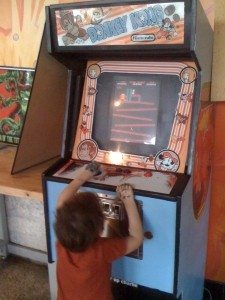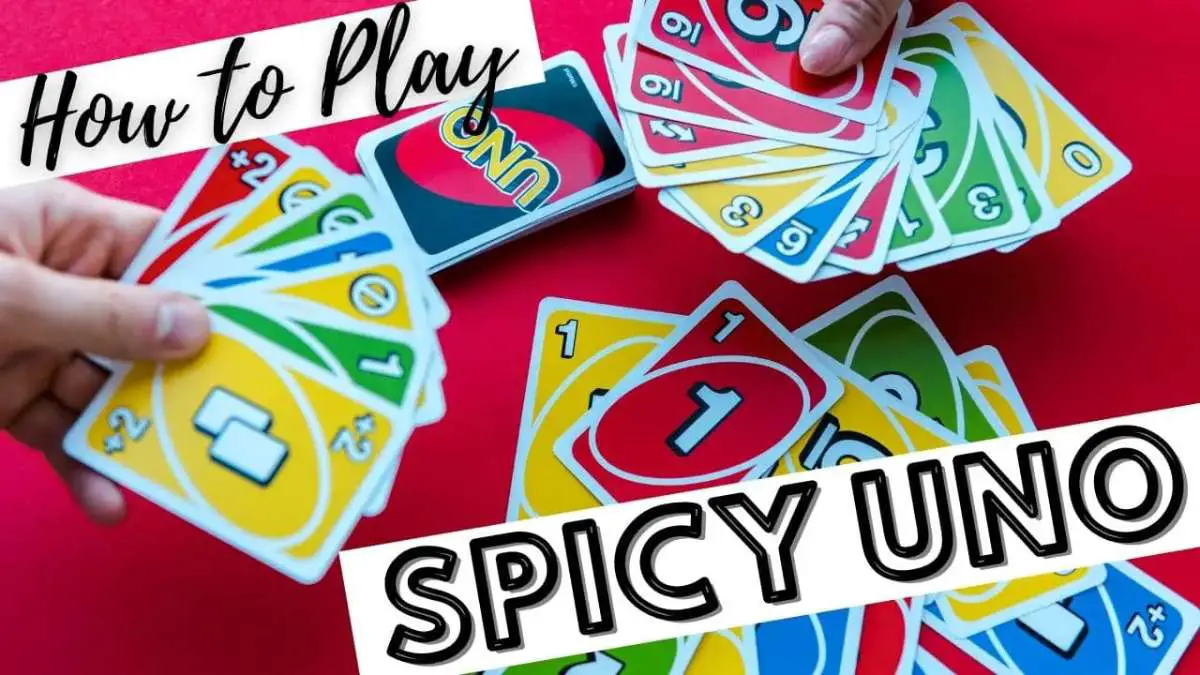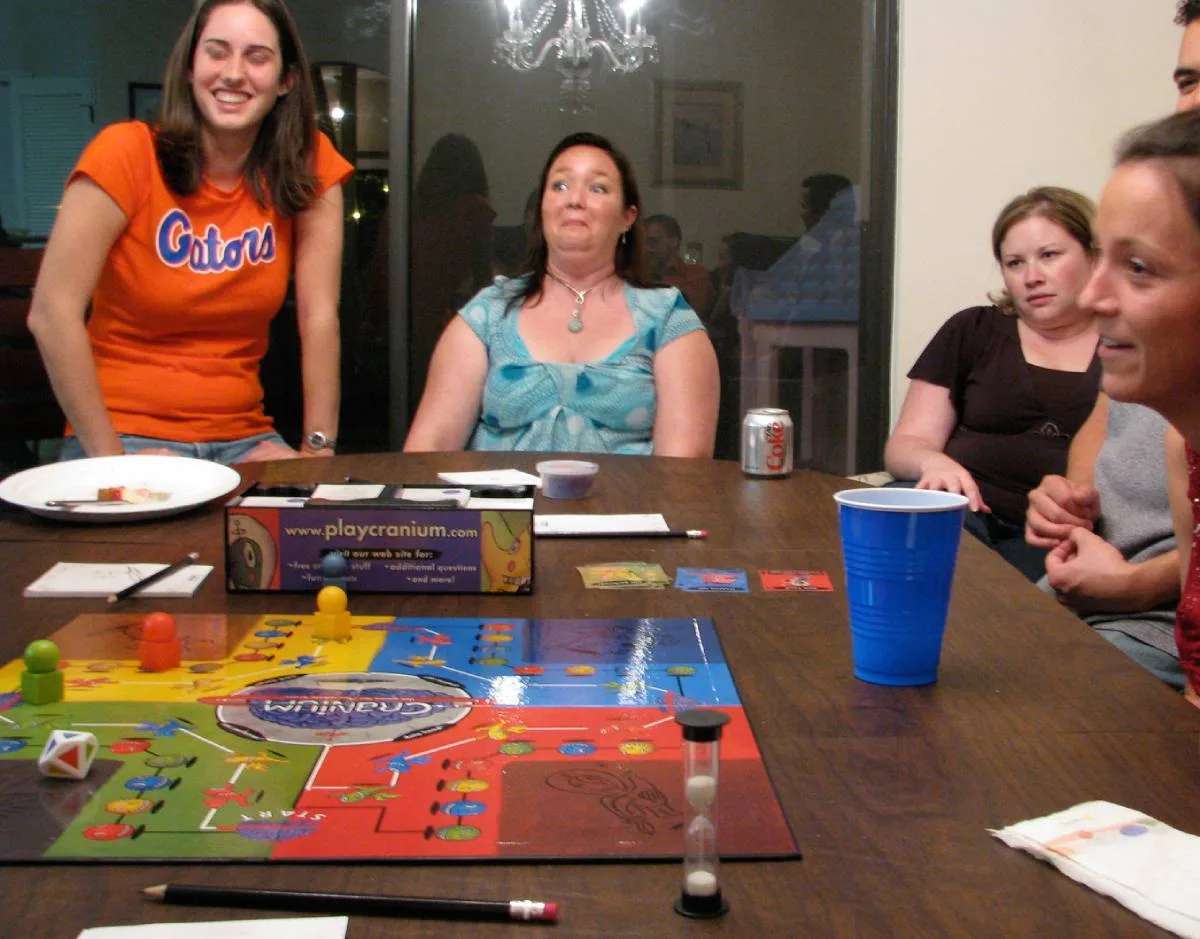Playing old video games is a lot of fun and a trip down memory lane for nostalgic people like me, who grew up in the game arcades.
While it’s common for some to think that video games were invented in the 1980s, they actually originated much, much earlier.
In fact, as you’ll find out below, video games were already around by the time that Elvis Presley, the Beatles, and the Beach Boys all shared the Top-40 music charts!
What was the first video game to hit the arcade? (Hint: it wasn’t Pong.)
When was the first modern car racing game released?
And what in the world does “Donkey Kong” mean?
These and other fun facts about old video games are in another castle… I mean await below.
#1 – The first multi-user video game was invented in 1958.
On October 18, 1958, William Higinbotham, a nuclear physicist at Brookhaven National Laboratory, invented Tennis for Two.
The electronic game could be played by 2 people using separate controllers that connected to a computer and was viewed on an oscilloscope monitor.
#2 – Video game programming evolved in the 1960s.
Several other sports-related video games were invented in the 1960s, including a basketball simulation game written by Charles Bacheller and a World Series baseball simulation game invented by Jacob Bergmann.
Both of these games were programmed in BASIC computer language and created in 1967.
#3 – The first arcade game was released in 1971. (No, it wasn’t Pong.)
Computer Space was the first commercially available, coin-operated arcade game machine when it was released in 1971.
While it wasn’t as widely known as the Pong video game that would hit the streets in 1972, Computer Space nevertheless holds an important spot in video game history.
#4 – Pong wasn’t the first arcade game, but it represents another important “first”.
Pong wasn’t the first arcade game. Yet when it was released on November 29, 1972, it became the first sports arcade video game.
Pong, which plays like a digital table tennis match, is also important because it was a huge commercial success and spawned many other games — thus revolutionizing the video game industry.
#5 – Atari was founded with just $500.
Imagine starting a multi-billion-dollar video game company with just a $500 investment! That’s exactly what Nolan Bushnell and Ted Dabney did when they split the cost to start up Atari in 1972.
Within 5 years, the company earned $28 million. By 1982, sales topped $2 billion.
By the way, Bushnell was also important in the arcade industry for another reason altogether — he founded the pizza and entertainment company Chuck E. Cheese.
Bushnell is seen talking about his early years at Atari in this video:
#6 – Arcades were “invaded” by another smash hit in 1978.
Pong may have been the game that established the success of the arcade game industry, but the 1970s saw the release of another hit that really launched the gaming industry into outer space.
The game? As you’ve probably guessed by now, I’m talking about Space Invaders!
The popular video game earned an average of $600 million per year between 1978 and 1982.
#7 – One video game ate up the competition in the early 1980s.
Space Invaders saw a serious rival hit American arcades in October 1980, when Pac-Man arrived on the scene.
By the early 1990s, Pac-Man earned more than $2.5 billion in quarters and became one of the most popular video games of all time.
The 1981 song “Pac-Man Fever” by Buckner & Garcia only helped to cement Pac-Man‘s spot in 1980s pop culture.
#8 – Super Mario wasn’t originally known as Mario.
Super Mario, a video game character about as widely recognized as Disney’s Mickey Mouse, was first seen by the game-playing public on July 9, 1981 in the Nintendo arcade game Donkey Kong.
However, Mario, the protagonist who must clobber an angry gorilla to rescue a damsel in distress known as Pauline, wasn’t called Mario in Donkey Kong. Instead, everyone’s favorite moustached plumber was simply named Jump Man.
Mario wouldn’t formally be known as Mario until 1983, when Nintendo released a game called Mario Brothers — which also introduced Mario’s famous brother, Luigi.
Action from the Mario Brothers game is seen in this video:
The Mario Brothers became “super” in 1985 upon the release of the Super Mario Brothers game for the Nintendo Entertainment System (NES).
#9 – Donkey Kong isn’t a donkey, but he is a “kong”.
OK, so anybody who plays old video games has probably wondered this… why is the famous Nintendo gorilla mascot, Donkey Kong, called “Donkey Kong”? After all, he isn’t even a donkey!
Well, according to Shigeru Miyamoto, who created Donkey Kong (and Mario), the word “Kong” is synonymous to “gorilla” — as in the scary ape antagonist from the King Kong movies. “Donkey” is translated from “stupid” or “goofy” (in Japanese) and also means “stubborn” — after all, who hasn’t seen a stubborn donkey?
#10 – E.T. for Atari was widely considered one of the worst video games ever.
The year was 1982, and the movie E.T., The Extra-Terrestrial became one of the biggest film hits of all time.
Atari, at the top of its game (sorry for the pun) in the very early 1980s, understandably wanted to capitalize on the success of the E.T. movie. So, the natural way for Atari to do this was by making an E.T. video game.
The E.T. game, designed for the popular Atari 2600 game system, contained a challenging glitch that caused E.T. to fall into pits.
Millions of players returned the game, and Atari buried the E.T. video games in a New Mexico landfill.
Years later, these discarded old video games were recovered in 2014 during a well-documented dig.
#11 – Turbo was one of the most important racing video games made.
Auto racing games represent a standard genre among the library of video games we play today. But, of course, car racing games as we now know them didn’t always exist.
Turbo, a game released by Sega in 1981, became one the first racing video games to incorporate the playability and graphics that gamers associate with modern-day racing games.
These features include:
- 3rd-person playing perspective
- Rear-view racer format
- City and landscape elements (such as trees and buildings)
- Landscapes and skies during different times of the day
- Hills along the race course
It’s probably little surprise that Turbo became one of the top arcade games of 1981. Turbo was soon adapted for home gaming systems Colecovision and Intellivision.
An Atari 2600 version of Turbo, which was in the planning stages, never came to fruition.
#12 – The Legend of Zelda originally allowed users to build their own dungeons.
A Japanese version of The Legend of Zelda, the popular 1986 Nintendo problem-solving game with renaissance-era flair, was supposed to allow players to design their own dungeons.
However, Shigeru Miyamoto and his colleagues at Nintendo later decided to scrap that capability from the rewritable disks and stick to providing pre-made (and quite challenging, I might add) dungeons.
#13 – The American version of Super Mario Brothers 2 was based on Doki-Doki Panic.
Birdo, Shyguys, and even Phanto (who creeped me out when I was 8 years old), are inextricably linked to the realm of the Super Mario Brothers.
So, it’s surprising to many people when I inform them that the version of Super Mario Brothers 2 that we all know and love actually wasn’t originally a Mario Brothers game.
It’s based on a platform called Doki Doki Panic — a 1987 game for Nintendo’s Japanese Famicom system that tells the story of 2 children who are sucked into a fantasy book they’re reading.
Why didn’t Nintendo release the original Super Mario Brothers 2 game to the U.S. market in the 1980s?
Apparently, some Nintendo testers thought the game would be too challenging for some players more accustomed to the original Super Mario Brothers game released for NES in 1985.
Meanwhile, the original Japanese version of Super Mario Brothers 2, which largely resembles the 1985 Super Mario Brothers game, was released as Super Mario Brothers: The Lost Levels on the 1993 Super NES (Super Nintendo Entertainment System) game, Super Mario All-Stars.
#14 Tetris was the first video game exported to the United States from the Soviet Union.
When Russian software developer Alexey Pajitnov created Tetris in 1984 as a computer game, he probably didn’t know that his invention would go onto become one of the most widely played (and imitated) video games in the world.
The game, whose name is derived from the Greek word “tetra,” which refers to the number 4 (there are 4 tiles on each Tetris game piece), was quickly adapted for a range of computer and gaming platforms in the 1980s.
However, the game’s huge launch into stardom certainly can be linked to the game’s 1989 release on Nintendo’s iconic handheld gaming system Game Boy — which came bundled with Tetris.
#15 – “Mr. Belvedere” once played Bowser from Super Mario Brothers
Those who love old video games and 1980s TV shows will surely get a kick out of the video below.
So, who among us remembers the the 1980s family sitcom Mr. Belvedere? It was a show that profiled a curmudgeonly British butler named Mr. Belvedere (played by Christopher Hewitt) who lived in a household headed by sportswriter George Owens (baseball’s Bob Uecker).
On a televised 1989 Ice Capades skating special, Hewitt plays Bowser, the main enemy from the Super Mario Brothers series!
Bonus Level: 1980s stars Alyssa Milano of Who’s The Boss fame and Jason Bateman from Silver Spoons and The Hogan Family also appear in this Ice Capades video:
More About Old Video Games
- Your Old Video Games Could Be Worth $12,000
- Classic Arcade Games
- How One Company Is Bringing Back Old Video Games
- 100 Greatest Video Games Of All Time
I’m a roller coaster junkie, a weather enthusiast, a frequent traveler, and a numismatist. My love for coins began when I was 11 years old. I primarily collect and study U.S. coins produced during the 20th century. I’m a member of the American Numismatic Association (ANA) and the Numismatic Literary Guild (NLG). I’ve also been studying meteorology and watching weather patterns for years. I enjoy sharing little-known facts and fun stuff about coins, weather, travel, health, food, and living green… on a budget. I work from home full-time as a journalist, reporter, and author.






